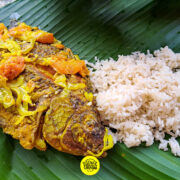
Cartagena Street Food Tour – From Empanadas to Arepas
Join us on a gastronomic adventure where every dish is a work of art. Explore the stories behind the savory empanadas, mouthwatering arepas, and the vibrant tapestry of flavors at the Cartagena Street Food Tour Symphony.
Cartagena Street Food Tour Symphony is a fusion of African, Indigenous, and Spanish culinary traditions, handcrafted carefully by locals.
From empanadas to arepas let’s unveil some of the secrets!
1. Empanada
Dough made from cornmeal until achieve a perfect balance of flavor, color and texture. Carefully handcrafted until its distinctive half-moon shape. Filled with harmonious blends of unique recipes and flavors that include: Ground meat, beef, pork, chicken, combined with rice, eggs, potatoes, onions, and a medley of spices, among others vegetables that reflects the available ingredients of the region. Sometimes accompanied by different types of hot sauces, if you like it.
2. Pan de bono
Imagine a golden treasure, fresh from the oven, wafting an aroma that tickles your nose with hints of warm corn, melted cheese and sometimes bocadillo. That’s a tasty pan de bono calling!. Pan de Bono is a Colombian staple similar to small bread but with symphony of textures and flavors.
Pan de bono is a dough made from corn filled with cheese and sometimes bocadillo. Baked carefully in the oven until it gets a slightly crisp exterior. The perfect pan de bono is served warm from the oven, allowing the cheese to be deliciously gooey and irresistible.
3. Arepa de Queso (Chesee Arepa)
Dough made from corn meal, similar to a flatbread. Incorporated of cheese into the dough, giving a unique savory flavor. Grated cheese, such as queso blanco, queso costeño or a similar type of white cheese, is the most relevant ingredient. The cheese is mixed into the dough to create a cheesy and flavorful arepa.
4. Arepa de Huevo
Dough made from corn meal, similar to a flatbread. Incorporated with a perfectly cracked egg. Imagine a warm corn meal transformed into a golden haven embracing a perfectly cracked egg, its golden yolk a promise of richness within.
The star of the show arrives in the form of a whole, cracked egg. Gently nestled into a pocket created in the arepa dough, the egg awaits its transformation. As the arepa de huevo meets the heat of a griddle or pan, the magic unfolds. The exterior transforms into a captivating canvas, boasting a slightly crisp and satisfying texture that yields to the soft and yielding cornmeal dough within.
5. Carimañola
Dough made of cooked and mashed cassava (yuca) filled with seasoned ground meat, shredded chicken, or cheese. The filled dough is then shaped into a torpedo-like form and deep-fried until golden brown and crispy.
6. Patacón con queso
Also known as tostón con queso, is a popular dish made from twice-fried green plantains (unripe bananas) and melted cheese on the top. Sometimes it is combined with Hogao a traditional Colombian creole sauce made with tomatoes, onions, scallions and spices.
7. Kola román
Kola román is a popular soft drink made with the kola nut created by Mr. Carlos Román in 1865 in Cartagena. A fruit brought to the Americas by enslaved Africans years ago. Served chilled or over ice. This way, it an be enjoyed at its most refreshing and flavorful. Sometimes with a little it of fresh lime.
8. Shrimp cocktails
Cartagena’s shrimp cocktail is a vibrant and refreshing dish that captures the essence of the Caribbean coast. Imagine a generous portion of succulent, cooked fresh local shrimps bathed in a tangy and flavorful sauce, all served chilled and perfect for a hot Colombian day.
Typically served chilled, often in a glass or a small bowl. Lime wedges or a squeeze of fresh lime might be offered on the side for those who want to adjust the acidity. Some vendors might serve them with tostadas (crispy fried corn tortillas) or patacones (twice-fried plantains) for scooping up the delicious shrimp and sauce.
9. Exotic fruits
Cartagena has a vibrant selection of exotic fruits that will transport you to a world of tropical new flavors.
Mango: Cartagena mango takes this classic fruit to a new level. With a vibrant yellow or orange exterior, incredibly juicy, sweet, and sometimes even slightly floral-scented flesh.
Mamoncillo: A small, green sphere, about the size of a marble, nestled amongst the vibrant foliage of a tree. At te exterior has a smooth, leathery skin that requires small effort to break through. You don’t simply bite into it, you have to open it and it will reveal a hidden delightful explosion of tartness, with a hint of citrus.
Pitaya (Dragon Fruit): This visually stunning fruit comes in various shades of pink or yellow, adorned with black speckles. Inside, the white or magenta flesh boasts a refreshingly sweet and slightly floral taste with a unique black seedy texture.
Borojó: A heart-shaped fruit with a reddish-brown skin and a creamy, custardy interior with a slightly sweet and acidic flavor.
Sapote: A large, brown fruit with a sweet and creamy flesh that resembles a sweet potato.
- Mango Biche: Green Mango cuted into sticks or matchsticks with lime juice squeezed over, salt and pepper is sprinkled on top, and sometimes additional ingredients like chili powder or sugar are added.
Pineapple: Tropical sweet and tangy flavor, with a balance between sugary notes and a slight acidity.
Strawberry: Tropical fruit with a red vibrant color, sweet taste, and refreshing juiciness.
Guanábana (Soursop): This intriguing fruit has a spiky green exterior that hides a treasure trove of creamy white flesh. The flavor is a delightful explosion of citrus and tropical sweetness, with a subtle undertone of tartness.
Lulo : This fuzzy orange fruit harbors a vibrant yellow pulp. The flavor is a complex dance between citrus and passion fruit, offering a refreshing sweetness with a hint of tartness. It’s a popular ingredient in juices and desserts.
Cereza Cherry: This tiny, bright red cherry packs a powerful punch of Vitamin C. Lastly its tartness might be surprising at first bite, it offers a refreshing burst of flavor and a natural health boost.
These exotic fruits can be enjoyed just savoring their natural sweetness and unique textures and also in:
- Freshly squeezed juices: A refreshing way to quench your thirst and experience the full flavor profile of the fruits.
- Cocktails: Adding a splash of exotic fruit juice to your favorite cocktail adds a unique twist.
- Sorbets and ice creams: The perfect way to cool down on a hot day and enjoy the fruits in a frozen treat.
10. Cocadas
Round or oval in shape and with the size of a small cookie. With a golden brown, white, yellow… exterior and a soft, chewy interior. The top of the cocada is decorated with grated coconut and panela. Made by combining coconut, sugar, panela, water, cinnamon, and vanilla extract in a saucepan. Cooked over medium heat and mixed until it thickens and forms a soft ball. Then dropped by spoonfuls onto a baking sheet. Once it has cooled you can enjoy it. Is a good source of carbohydrates, fiber, protein, vitamins and minerals, including iron, potassium, and magnesium. It is very sweet!







